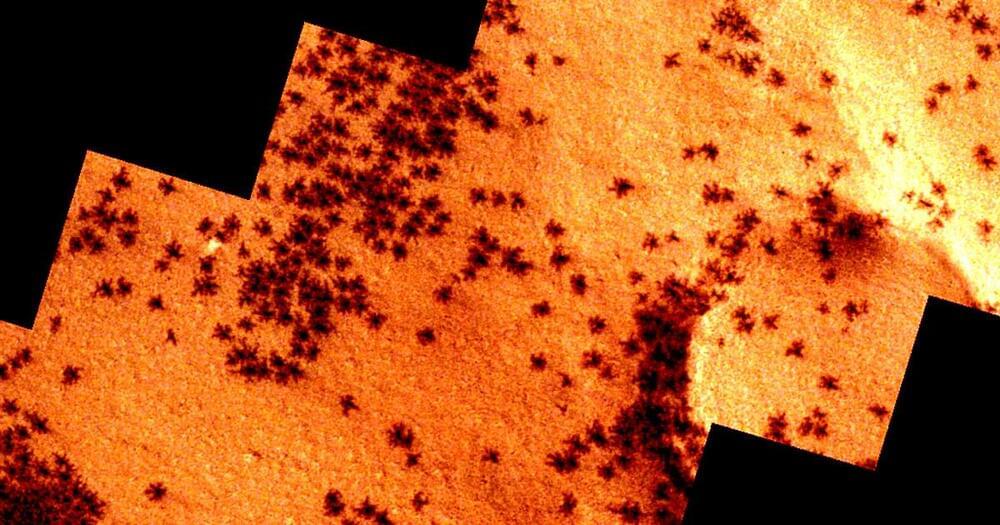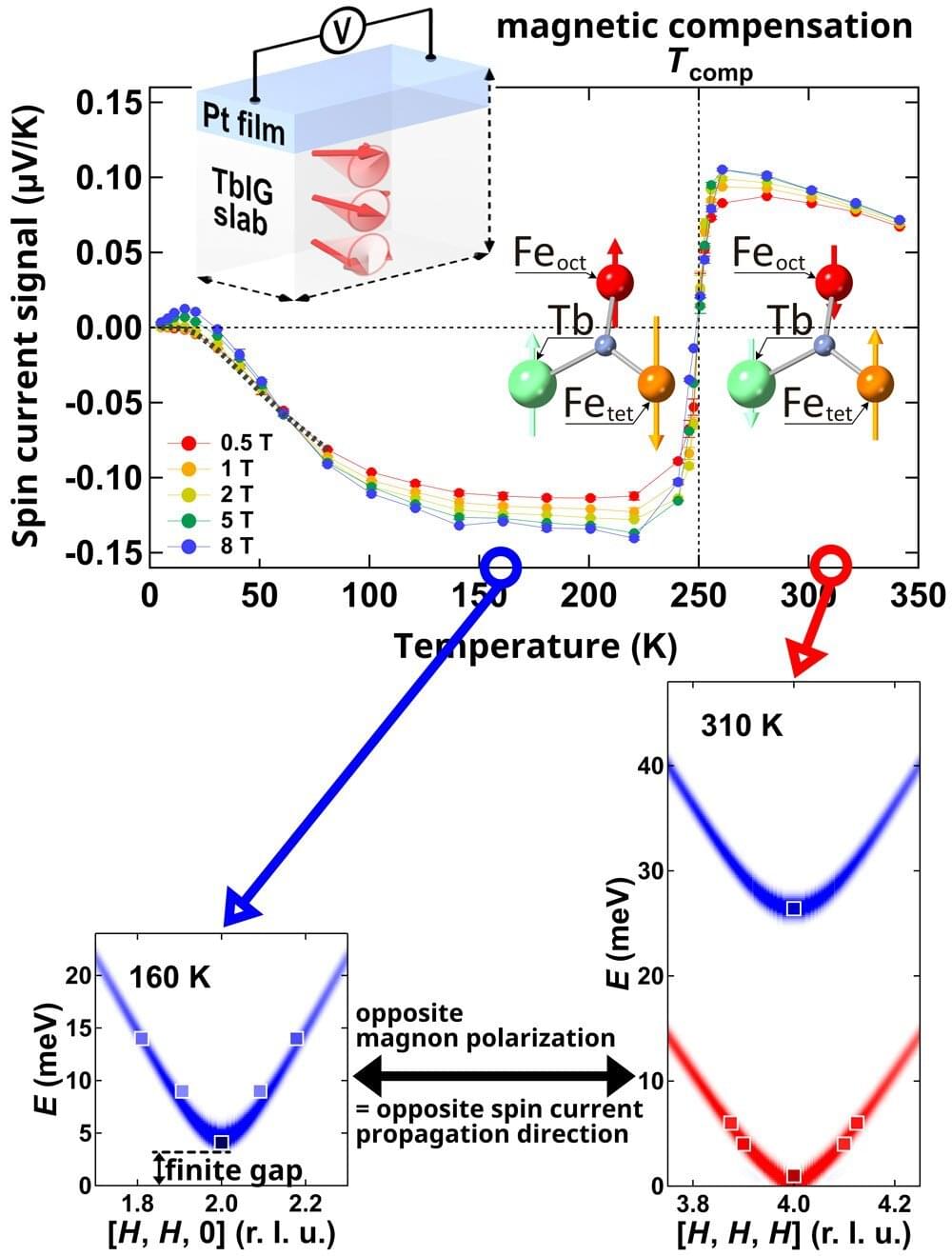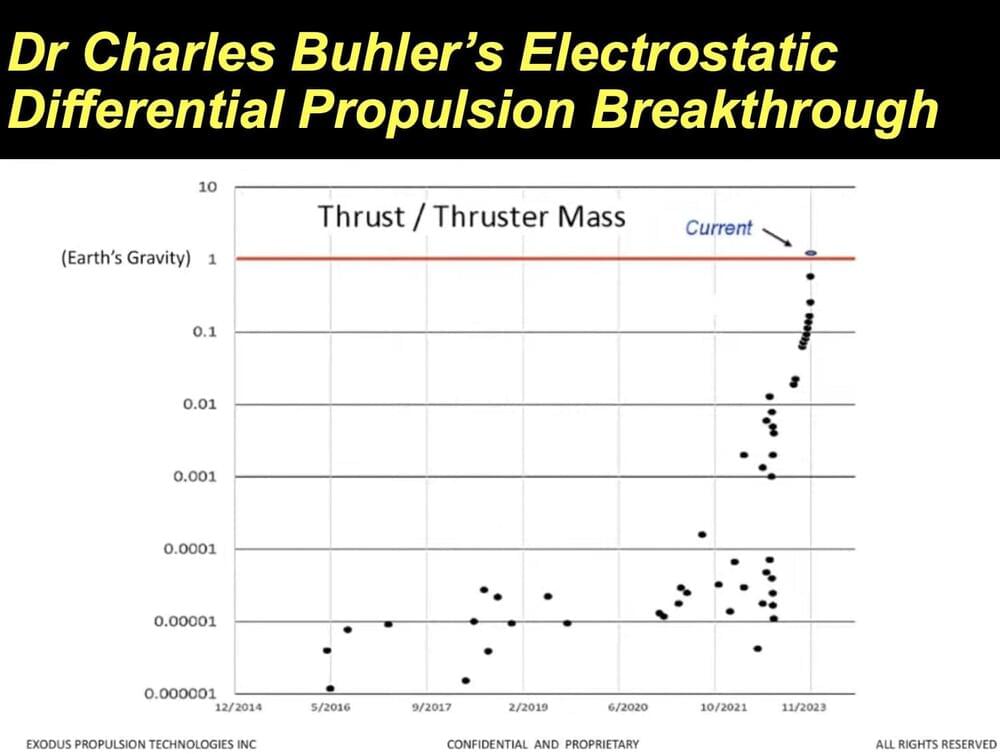The newly discovered type of magnetic material could improve existing tech, including making better and faster hard drives.



Imagine a real spider 3,300 feet across.
The European Space Agency’s Mars Express orbiter has spotted “spiders” on the Red Planet’s southern polar region.
But they’re not the arachnids we fear or adore back on Earth — they’re the result of a complex geological process that causes carbon dioxide to sublimate, digging up darker material from below the surface during the planet’s spring.
And they’re a whole lot larger than the spiders you’re used to, measuring up to 3,300 feet across.


It has been known for centuries that light exhibits wave-like behavior in certain situations. Some materials are able to rotate the polarization, i.e. the direction of oscillation, of the light wave when the light passes through the material. This property is utilized in a central component of optical communication networks known as an “optical isolator” or “optical diode.” This component allows light to propagate in one direction but blocks all light in the other direction.
Experts have been busy working on producing advanced materials for modern electronic devices to meet this escalating demand.
Now, a significant milestone in this endeavor has been achieved by a team of researchers at the Georgia Institute of Technology, who have successfully engineered the world’s first functional semiconductor using graphene.

Dr. Charles Buhler and Exodus Technologies claims that systems with electrostatic pressure differences or electrostatic divergent fields gives systems with a center of mass with non-zero force component (aka generate movement). Buhler is NASA’s subject matter expert on electrostatics. They want to move to demo the system in orbit. These kinds of claims are controversial but the work seems to be thorough. It will only cost about $500k to $1M to create a rideshare mission into orbit to test the system. The mass of an early orbital system would greatly exceed the active materials of the propulsion, which would reduce performance. High performance space propulsion would need to increase the active materials as a percentage of the mass of the craft.
Dr. Charles Buhler discusses an experimental propulsion results based on asymmetrical electrostatic pressure, in a device described in International Patent# WO2020159603A2. The device is described as a system and method for generating a force from a voltage difference applied across at least one electrically conductive surface. The applied voltage difference creates an electric field resulting in an electrostatic pressure force acting on at least one surface of an object. Asymmetries in the resulting electrostatic pressure force vectors result in a net resulting electrostatic pressure force acting on the object. The magnitude of the net resulting electrostatic pressure force is a function of the geometry of the electrically conductive surfaces, the applied voltage, and the dielectric constant of any material present in the gap between electrodes.
Dr. Buhler has experience working with electrostatic discharge & ESD safety for the Space Shuttle Program, the International Space Station Program and the Hubble Space Telescope Program. He was also a Co-Investigator for three NASA Research Announcements funded by the Mars Exploration Program, and is currently working on NASA’s Dust Project focused on utilizing electrostatic methods to remove dust from personnel and equipment that will be sent to the Moon through NASA’s Constellation Program.

MIT scientists have tackled key obstacles to bringing 2D magnetic materials into practical use, setting the stage for the next generation of energy-efficient computers.
Globally, computation is booming at an unprecedented rate, fueled by the boons of artificial intelligence. With this, the staggering energy demand of the world’s computing infrastructure has become a major concern, and the development of computing devices that are far more energy-efficient is a leading challenge for the scientific community.
Use of magnetic materials to build computing devices like memories and processors has emerged as a promising avenue for creating “beyond-CMOS” computers, which would use far less energy compared to traditional computers. Magnetization switching in magnets can be used in computation the same way that a transistor switches from open or closed to represent the 0s and 1s of binary code.

Scientists discovered that skyrmions, potential future bits for computer memory, can now move at speeds up to 900 m/s, a significant increase facilitated by the use of antiferromagnetic materials.
An international research team led by scientists from the CNRS[1] has discovered that the magnetic nanobubbles[2] known as skyrmions can be moved by electrical currents, attaining record speeds up to 900 m/s.
Anticipated as future bits in computer memory, these nanobubbles offer enhanced avenues for information processing in electronic devices. Their tiny size[3] provides great computing and information storage capacity, as well as low energy consumption.
